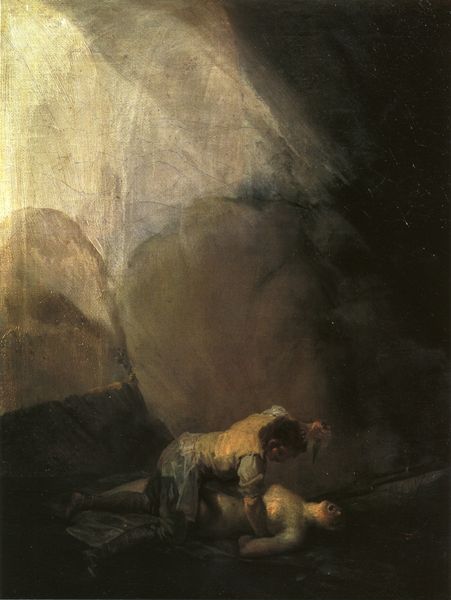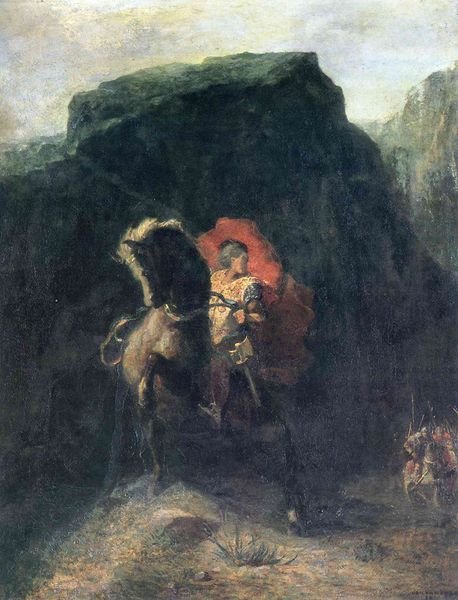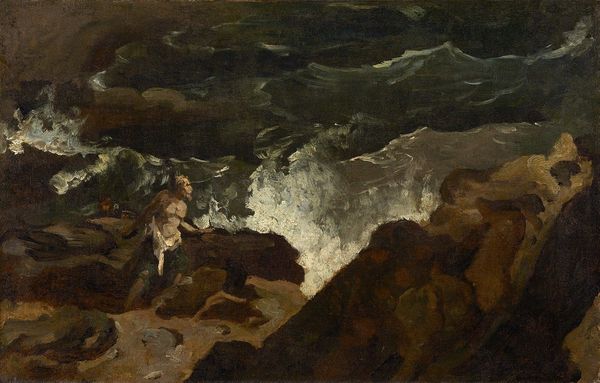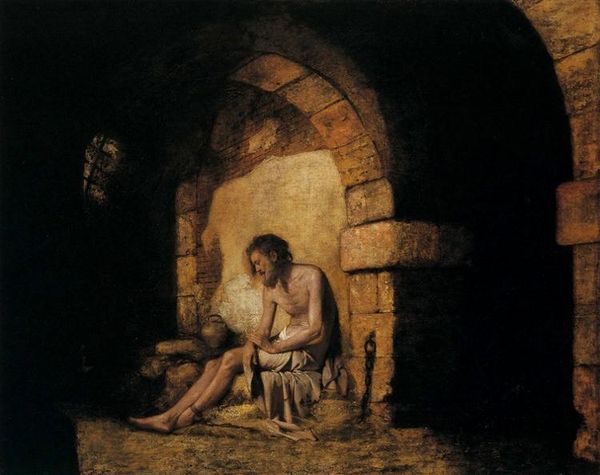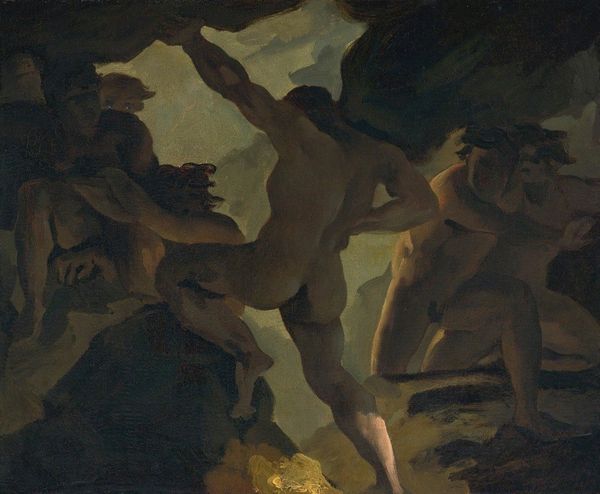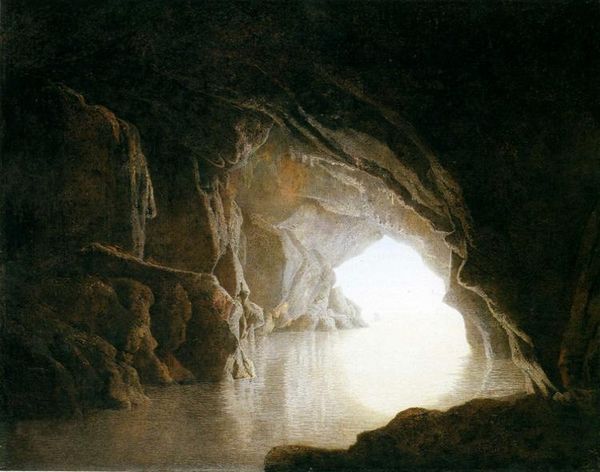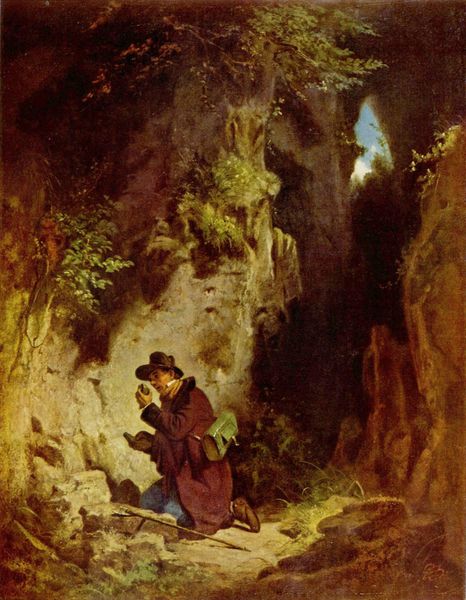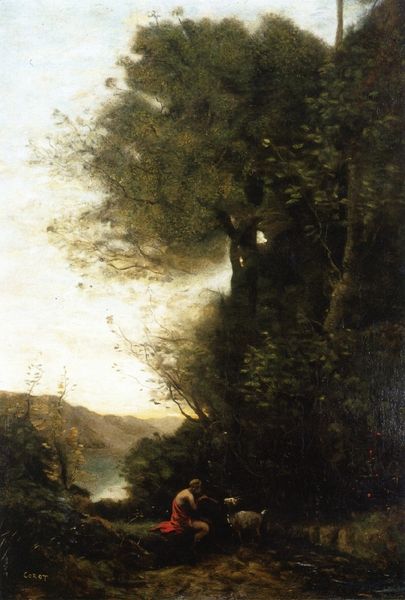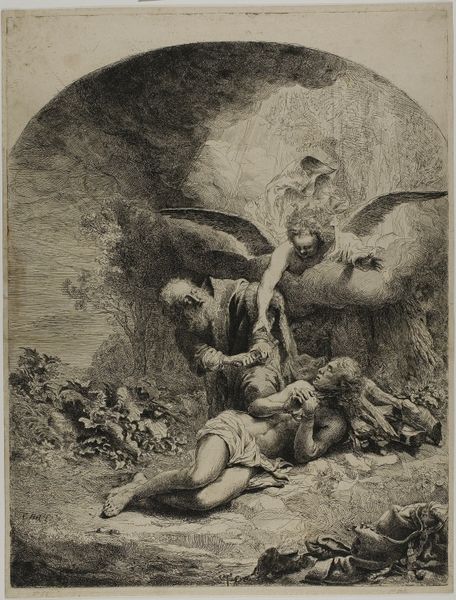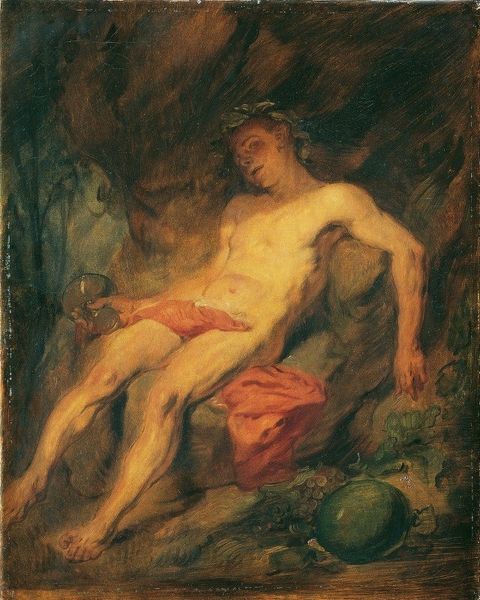
Dimensions: 41.5 x 31.8 cm
Copyright: Public domain
Curator: Goya’s "Brigand Stripping a Woman," created around 1800, certainly presents a stark vision, doesn’t it? Editor: Absolutely. My first impression is one of palpable dread. The almost monochromatic palette heightens the drama, pushing the narrative to the forefront. Curator: Indeed. Goya painted this during a time of immense social upheaval. It reflects the violence and insecurity that were becoming rampant, particularly experienced by women in times of war. It also illustrates how the art world often focuses on conflict and disruption as political signifiers of change. Editor: The woman's vulnerability is so potent; her body becomes a battleground, symbolizing broader societal struggles and patriarchal violations. The composition, especially the dramatic use of chiaroscuro, reminds me of feminist writings on the objectification of the female form. Is her identity fully extinguished to emphasize that role as symbolic vessel? Curator: Exactly. Think about how paintings like these were circulated and viewed at the time. The private collections where works like this would reside acted almost like political clubs—elite spaces where opinions were formed. Editor: Right. It’s interesting how Goya, known for his courtly portraits, could also turn his gaze toward such brutal scenes. Is it a critique of power, or perhaps, in some way, a reflection of its inherent violence? Curator: Perhaps both? The painting uses history as a dark mirror, reflecting uncomfortable truths about humanity, class, and, as you noted, deeply entrenched power structures. The politics of imagery serve to shape our perception of not only women, but also social values of that era. Editor: I see Goya’s painting less as a historical document and more as an allegory of human cruelty. His commentary is on systemic injustice. The image evokes parallels in contemporary scenarios: marginalized people, gender-based crimes, economic disparities... sadly timeless, isn't it? Curator: Timeless in its subject matter, certainly. As art historians, examining these visual texts offers unique windows onto both the past and ourselves, doesn't it? Editor: Indeed. It serves as an invitation, even a demand, to continue reflecting on the role and impact of art in our societies.
Comments
No comments
Be the first to comment and join the conversation on the ultimate creative platform.
